For the past 31 years my wife has directed the Junior Senior Scholars summer camps at North Central College. Low-income, minority students spend five weeks on the college campus immersed in learning, activity, and exploration. Classes are taught by preservice teachers and supervised by experienced teachers who are North Central graduates. Annually, Jan even takes more than 100 on overnight camping trip. She has found that her Junior Senior Scholars students are far less likely to experience summer learning loss, aka “summer slide” than their neighborhood peers. For many students from low-income families, access to learning opportunities are not readily available. As a result, those who do have access and opportunity accumulate far more instructional time during their years of schooling.
The math is simple even by conservative estimates. Let’s say a middle-class student has three hours of learning time a day for six weeks. That learning time may be in summer school, summer camp, visits to libraries and museums, or just reading. That is 90 hours of learning in the summer. (Jan’s students have 30 hours/week for five weeks for 150 hours). With twelve years of schooling, that’s 1080 extra hours which equates to more than an additional year of schooling. It is no wonder that Jan’s Junior Senior Scholar students are “College Bound,” a mantra they repeat in call and response every day at camp. All together now – call “WE ARE …” and response “COLLEGE BOUND.”
Of course, that’s just one example, but an extensive body of research confirms what she and her students know. A 2007 study of Baltimore students moving from first grade though age 22 found that about two-thirds of the achievement gap in ninth grade reading is attributable to lack of access to summer learning opportunities during elementary school. Though low-income children make about the same amount of progress during the year as their middle-class peers, the effect of summer learning loss cumulates over time according to a 2011 RAND Corporation study. These researchers found that most elementary students’ performance on reading assessments declines during the summer, the loss is far greater for low-income students than their peers. They contend that schools and districts that try to close the achievement gap with school year interventions alone will not be successful. In other words, summer learning is essential for low-income students.
Compounding the problem is that low-income children are more likely to enter school at a disadvantage, especially if they did not have access to a quality preschool experience. A child living in a middle class American family most likely didn’t start learning the day they started kindergarten. These children are read to and conversed with from an early age and engage in learning activities consistently outside of the classroom. As a result, students enter kindergarten with enormous vocabulary disparities, which in turn, impact reading. Writes Laura Colker (2014): “Children’s vocabulary skills are linked to their economic backgrounds. By 3 years of age, there is a 30 million word gap between children from the wealthiest and poorest families. A recent study shows that the vocabulary gap is evident in toddlers. By 18 months, children in different socio-economic groups display dramatic differences in their vocabularies.” This research echoes Hart and Risley’s findings nearly two decades ago: “Simply in words heard, the average child on welfare was having half as much experience per hour (616 words per hour) as the average working-class child (1,251 words per hour) and less than one-third that of the average child in a professional family (2,153 words per hour).”
To summarize, children from low-income families generally enter school with significantly fewer opportunities for vocabulary and language acquisition that will impact reading achievement and do not have access to programs, services, or activities in future summers to help make up for these early gaps. Moreover, every summer that passes without summer learning serves to widen the gap as the hours of lost time accumulate. The gap only continues to widen year after year. In part two of this series, we will explore ways to prevent the summer slide.
Alexander, K. L., Entwisle, D., & Olson, L. (2007). Lasting consequences of the summer learning gap. American Sociological Review, 72, 167–180.
Colker, Laura J. (2014) The word gap: the early years make a difference. Teaching Young Children (volume 7, number 3).
https://www.naeyc.org/resources/pubs/tyc/feb2014/the-word-gap
Hart, B., & T.R. Risley. 2003. “The Early Catastrophe: The 30 Million Word Gap by Age 3.” American Educator 27 (1): 4–9. www.aft.org/pdfs/americaneducator/spring2003/TheEarlyCatastrophe.pdf.
McCombs, J. S., Augustine, C. H., Schwartz, H. L., Bodilly, S. J., McInnis, B., Lichter, D. S., & Cross, A. B. (2011). Making summer count: How summer programs can boost students’ learning. Santa Monica, CA: RAND. Retrieved from www.rand.org/content/dam/rand/pubs/monographs/2011/RAND_MG1120.pdf

